
William Henry Pratt, known professionally as Boris Karloff and occasionally billed as Karloff the Uncanny, was a British actor. His portrayal of Frankenstein's monster in the horror film Frankenstein (1931), his 82nd film, established him as a horror icon, and he reprised the role for the sequels Bride of Frankenstein (1935) and Son of Frankenstein (1939). He also appeared as Imhotep in The Mummy (1932), and voiced the Grinch in, as well as narrating, the animated television special of Dr. Seuss' How the Grinch Stole Christmas! (1966), which won him a Grammy Award.

Things to Come is a 1936 British science fiction film produced by Alexander Korda, directed by William Cameron Menzies, and written by H. G. Wells. The film stars Raymond Massey, Edward Chapman, Ralph Richardson, Margaretta Scott, Cedric Hardwicke, Maurice Braddell, Sophie Stewart, Derrick De Marney, and Ann Todd.
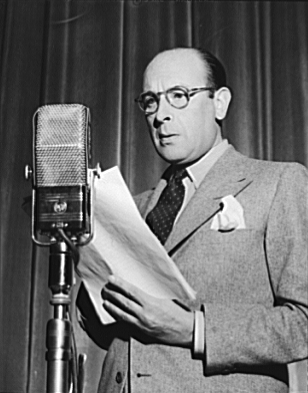
Sir Cedric Webster Hardwicke was an English stage and film actor whose career spanned over 50 years. His theatre work included notable performances in productions of the plays of Shakespeare and Shaw, and his film work included leading roles in several adapted literary classics.
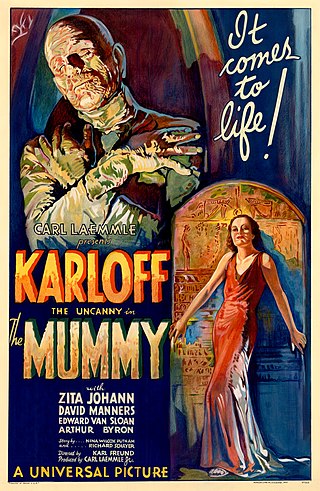
The Mummy is a 1932 American pre-Code supernatural horror film directed by Karl Freund. The screenplay by John L. Balderston was adapted from a treatment written by Nina Wilcox Putnam and Richard Schayer. Released by Universal Studios as a part of the Universal Monsters franchise, the film stars Boris Karloff, Zita Johann, David Manners, Edward Van Sloan and Arthur Byron.

The Mask of Fu Manchu is a 1932 American pre-Code film directed by Charles Brabin. Written by Irene Kuhn, Edgar Allan Woolf and John Willard, it was based on the 1932 novel of the same name by Sax Rohmer. The film, featuring Boris Karloff as Fu Manchu and Myrna Loy as his daughter, revolves around Fu Manchu's quest for the golden sword and mask of Genghis Khan. Lewis Stone played his nemesis.

Climax! is an American television anthology series that aired on CBS from 1954 to 1958. The series was hosted by William Lundigan and later co-hosted by Mary Costa. It was one of the few CBS programs of that era to be broadcast in color, using the massive TK-40A color cameras pioneered and manufactured by RCA, and used primarily by CBS's rival network, NBC. Many of the episodes were performed and broadcast live, but, although the series was transmitted in color, only black-and-white kinescope copies of some episodes survive to the present day. The series finished at #22 in the Nielsen ratings for the 1955–1956 season and #26 for 1956–1957.

Val Lewton was a Ukrainian-American novelist, film producer and screenwriter best known for a string of low-budget horror films he produced for RKO Pictures in the 1940s. His son, also named Val Lewton, was a painter and exhibition designer.

Ernest Frederic Graham Thesiger, CBE was an English stage and film actor. He is noted for his performance as Doctor Septimus Pretorius in James Whale's film Bride of Frankenstein (1935).
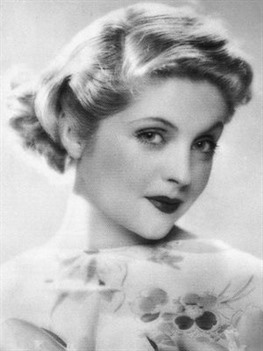
Dorothy Hyson, Lady Quayle was an American-born film and stage actress who worked largely in England. During World War II, she worked as a cryptographer at Bletchley Park.
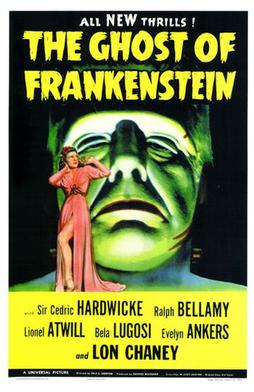
The Ghost of Frankenstein is a 1942 American horror film directed by Erle C. Kenton and starring Cedric Hardwicke, Lon Chaney Jr. and Bela Lugosi. It is the fourth film in the Frankenstein series by Universal Pictures, and the follow-up to Son of Frankenstein (1939). The film's plot follows the previous film's plot: Frankenstein's Monster and his companion Ygor are chased out of town. They go to another small town to encourage the younger son of Henry Frankenstein to continue his father's experiments, so that Ygor can have revenge against his enemies and his brain transplanted into the Monster's skull.

How the Grinch Stole Christmas! is a 1966 American animated television special, directed and co-produced by Chuck Jones. Based on the 1957 children's book of the same name by Dr. Seuss, the special features the voice of Boris Karloff as the Grinch. It tells the story of the Grinch, who tries to ruin Christmas for the townsfolk of Whoville below his mountain hideaway.
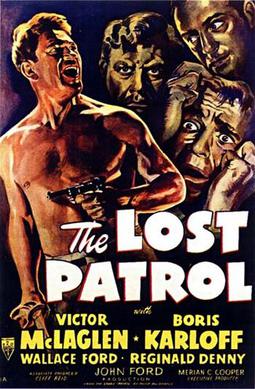
The Lost Patrol is a 1934 American pre-Code war film by RKO, directed and produced by John Ford, with Merian C. Cooper as executive producer and Cliff Reid as associate producer from a screenplay by Dudley Nichols from the 1927 novel Patrol by Philip MacDonald. Max Steiner provided the Oscar-nominated score. The film, a remake of a 1929 British silent film, starred Victor McLaglen, Boris Karloff, Wallace Ford, Reginald Denny, J. M. Kerrigan and Alan Hale.

Lured is a 1947 American film noir directed by Douglas Sirk and starring George Sanders, Lucille Ball, Charles Coburn, Sir Cedric Hardwicke, and Boris Karloff. The film is a remake of 1939 French film Pièges directed by Robert Siodmak, which was titled Personal Column in the United States; Personal Column was also the title of this film as originally released. It did not enjoy good business under that name – the code administration was concerned that some people thought the film was titled "LURID", so United Artists pulled it from distribution, and subsequently re-released it with the alternate title.

The Life and Adventures of Nicholas Nickleby is a 1947 British drama film directed by Alberto Cavalcanti and starring Cedric Hardwicke, with Derek Bond in the title role. The screenplay by John Dighton is based on the Charles Dickens novel The Life and Adventures of Nicholas Nickleby (1839). This first sound screen adaptation of the book followed silent films released in 1903 and 1912.

Forever and a Day is a 1943 American drama film, a collaborative effort employing seven directors/producers and 22 writers, with a large cast of well-known stars.
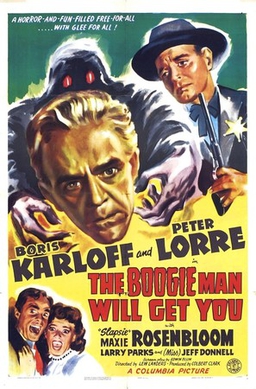
The Boogie Man Will Get You is a 1942 American comedy horror film directed by Lew Landers and starring Boris Karloff and Peter Lorre. It was the final film Karloff made under his contract with Columbia Pictures, and it was filmed in the wake of his success in the 1941 Broadway production Arsenic and Old Lace. As he had done several times previously, Karloff played the part of a "mad scientist", Professor Billings, who is using the basement of his inn to conduct experiments using electricity to create a race of superhumans. The inn is bought by a new owner, who is initially unaware of the work Billings is conducting.

What a Carve Up! is a 1961 British comedy-horror film directed by Pat Jackson and starring Sid James, Kenneth Connor, and Shirley Eaton. It was released in the United States in 1962 as No Place Like Homicide. It was written by Ray Cooney and Tony Hilton, loosely based on the 1928 novel The Ghoul by Frank King. A previous version, titled The Ghoul, was filmed in 1933 by Gaumont-British Pictures.

Harold Huth was a British actor, film director and producer.
Julius Hagen (1884–1940) was a German-born British film producer who produced more than a hundred films in Britain.
John Hastings Turner, frequently referred to as Hastings Turner or J. Hastings Turner, was an English novelist, dramatist and theatre director. His works were filmed and performed on stage and in film in Britain and the United States from the 1920s to the 1940s.


















